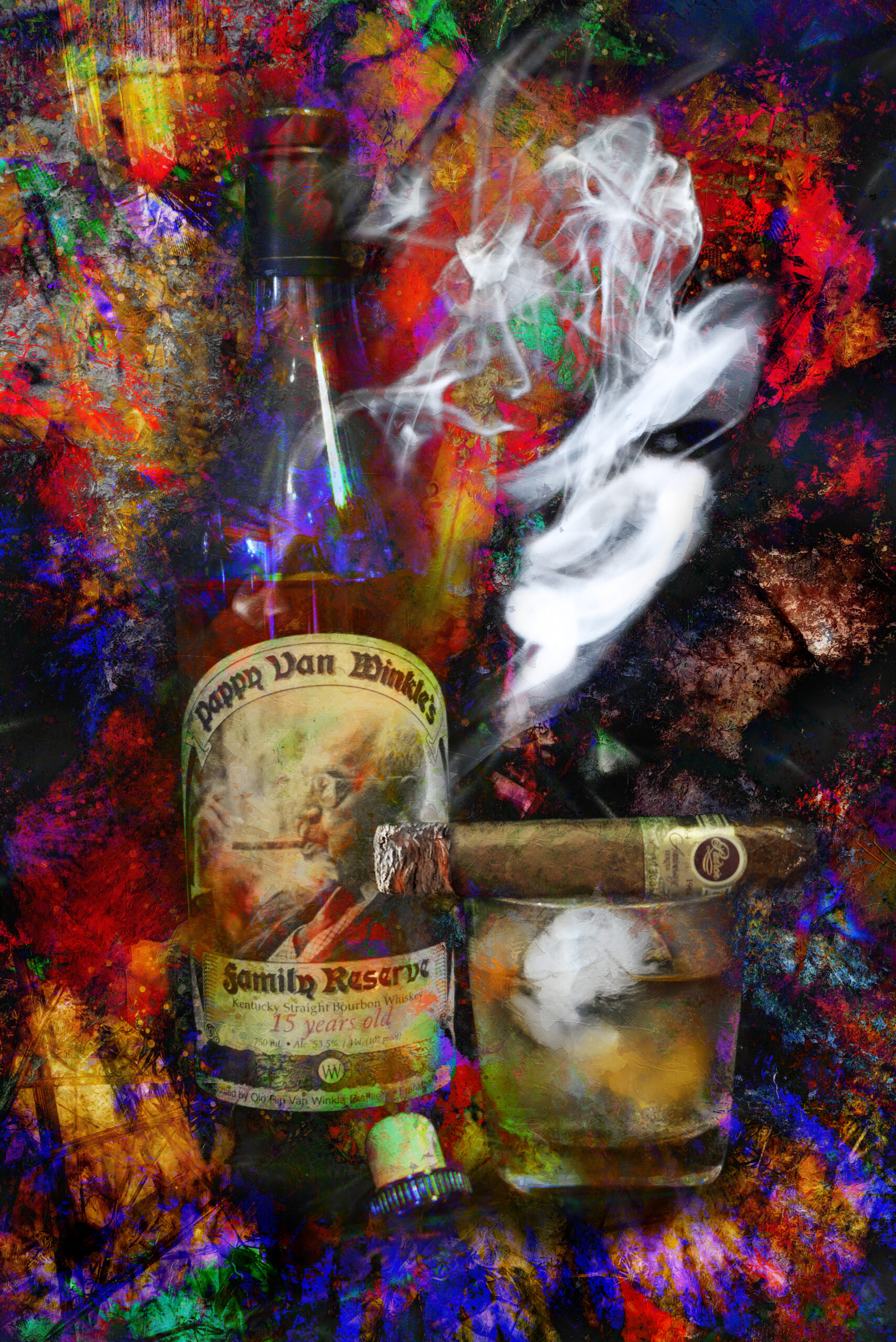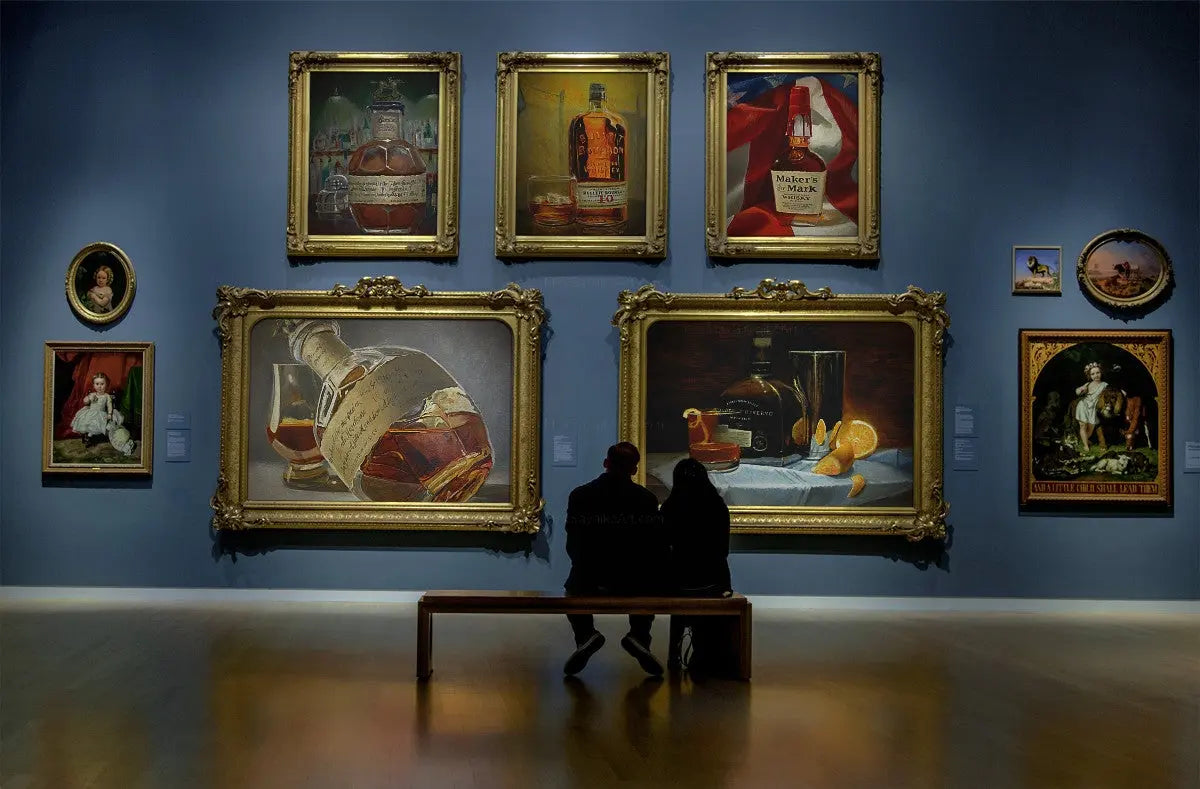The Significance of Whiskey Art in Celebrating Heritage and Craftsmanship in the Beverage Industry
The elaborate connection in between bourbon art and the event of heritage and craftsmanship within the drink sector can not be overstated. Via attentively designed bottles and tags, scotch brand names encapsulate their historic roots and the artisanal abilities that define their manufacturing approaches. This creative measurement not just boosts market allure yet also acts as a channel for social narration, cultivating a deeper connection in between the consumer and the craft. As we explore the numerous elements of this subject, appealing questions regarding the influence of contemporary fads on traditional techniques emerge, prompting additional examination.
The Historic Roots of Whiskey
At the heart of bourbon's allure exists a rich tapestry of historic roots that map back to ancient people. The beginnings of whiskey can be connected to the purification methods of the Sumerians and Babylonians around 2000 BCE, where early types of fermented grain drinks started to arise. Nevertheless, it remained in the Center Ages that the art of distillation advanced considerably, particularly in Ireland and Scotland, leading to the development of scotch as we understand it today.
The term "bourbon" itself stems from the Gaelic word "uisce beatha," suggesting "water of life." This phrase emphasizes the social value of bourbon in Celtic societies, where it was often related to rituals, events, and communal bonding. By the 15th century, purification ended up being an acknowledged craft within reclusive neighborhoods, leading the means for the facility of lawful distilleries.
As profession routes expanded, bourbon's appeal expanded, transcending regional limits and catching the interest of aficionados worldwide. Limited Edition. This historical trip mirrors not just the craftsmanship behind bourbon manufacturing however also its indispensable duty in social and cultural contexts, marking it as a considerable beverage throughout background
Artistic Expression in Branding
Scotch branding stands as a compelling intersection of creativity and business, where visual identification plays a critical role in forming customer assumption. The appearances of whiskey labels, packaging, and advertising products reflect not only the brand's story but likewise its core worths and heritage. With artistic expression, distilleries convey a story that resonates with customers, stimulating emotions and triggering links.
Using color, typography, and imagery in branding serves to separate items in a saturated market. Standard themes may evoke a feeling of authenticity and workmanship, while modern-day layouts can signify innovation and forward-thinking. This tactical creative direction enhances brand acknowledgment and loyalty, enabling consumers to create a personal partnership with the whiskey they select.
Additionally, creative expression in branding often acts as a party of local heritage. Distilleries often incorporate local signs or historical recommendations into their layouts, creating a sense of place that invites customers to engage in a wider social experience. Ultimately, the creativity behind bourbon branding not only enhances aesthetic appeal yet also improves the general narrative of the brand, promoting a deeper gratitude for the craftsmanship and heritage embedded in each container.
Craftsmanship in Container Style
The artistry evident in scotch branding extends past visual identification to include the craftsmanship included in bottle design. Each container acts as a vessel not simply for the spirit within, yet likewise for the tale it tells regarding its tradition, beginning, and top quality. The layout process needs meticulous interest to information, as aspects such as closure, shape, and product contribute substantially to the total understanding of the bourbon.
Craftsmanship in bottle design involves selecting high-quality glass that can enhance the bourbon's color and clarity, while likewise supplying a responsive experience for the consumer. The shape of the container must be both functional and aesthetically attractive, usually mirroring the heritage of the brand. Several distilleries choose one-of-a-kind forms or embossed logos that stimulate a sense of authenticity and history.
Furthermore, the label layout and typography play an essential role in connecting the brand's story. Bourbon Art. A well-crafted bottle not only mesmerizes the customer's eye but also reinforces the brand's dedication to top quality and custom. In this way, the craftsmanship of bottle design becomes an essential element of the scotch experience, combining virtuosity with an extensive respect for heritage
Social Significance of Scotch Art
Celebrating custom and workmanship, the cultural relevance of scotch art transcends plain visual appeals, intertwining with the social and historical narratives of the regions from which it originates. Each container offers imp source as a canvas, showing the one-of-a-kind stories, folklore, and customs that have actually shaped local whiskey-making techniques. The complex layouts often reflect the heritage of the distillers, incorporating icons and concepts that reverberate with the society and worths of their neighborhoods.

In addition, scotch art plays a crucial duty in common events and events, acting as a substantial link in between people and their shared experiences. By valuing the creativity in scotch packaging, consumers grow a deeper understanding and regard for the craft, ultimately enriching their satisfaction of the beverage itself.
Modern Trends in Whiskey Discussion
Recently, the presentation of bourbon has actually evolved to show contemporary preferences and trends while still recognizing conventional workmanship - Bourbon Art. Distilleries are significantly concentrating on aesthetic aspects that improve the general alcohol consumption experience, connecting the void in between heritage and modernity
Ingenious bottle styles have arised, typically integrating sustainable materials and artistic tags that inform engaging tales. Numerous brands now work together with regional musicians, infusing their products with special visual expressions that reverberate with customers. Furthermore, limited-edition launches are typically packaged in collectible containers, adding worth and allure for aficionados.

Conclusion
In verdict, scotch art offers as a vital conduit for revealing the heritage and workmanship intrinsic in the beverage industry. Via elaborate branding, cutting-edge bottle designs, and culturally considerable imaginative elements, bourbon brands successfully anonymous honor their practices and connect with customers.


Craftsmanship in container layout entails selecting high-grade glass that can improve the whiskey's shade and quality, while additionally providing a tactile experience for the customer. In this method, the workmanship of bottle style ends up being an essential facet of the whiskey experience, combining virtuosity with an extensive regard for heritage.
In verdict, whiskey art offers as a crucial conduit for sharing the heritage and craftsmanship integral in the drink sector.